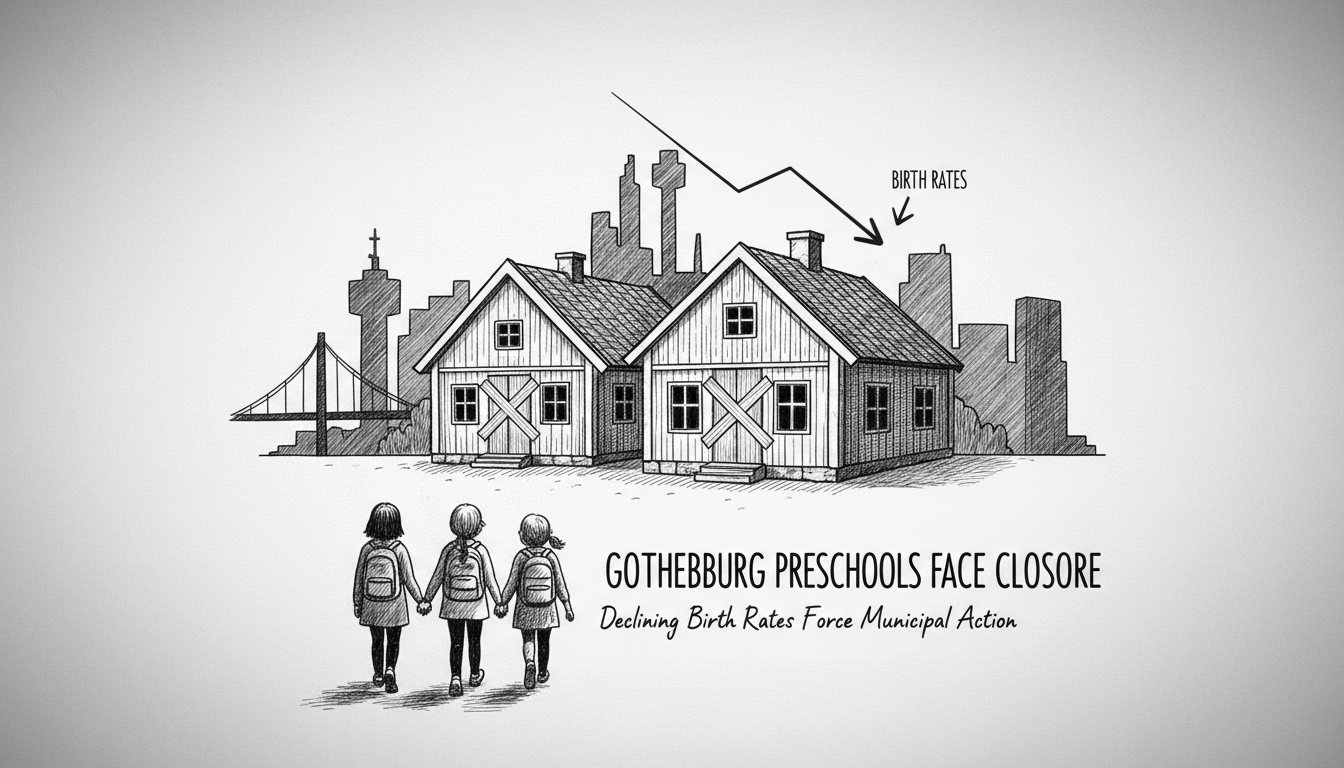Gothenburg officials propose closing two more preschools in the city. This follows eight preschool closures last year. The city cites declining numbers of young children as the reason.
Parents received notification about the potential closures this week. City authorities expect to make a final decision in December. The closures reflect a broader demographic trend affecting Swedish cities.
Gothenburg preschool closures highlight a national challenge. Sweden faces declining birth rates across multiple regions. The country's fertility rate dropped below replacement level years ago. This creates practical problems for municipal planning and education systems.
Municipalities must balance preschool availability with taxpayer resources. Empty classrooms cost money without serving families. Officials face difficult choices about maintaining underused facilities.
International readers might find Sweden's preschool system noteworthy. The country provides heavily subsidized childcare from age one. Parents pay maximum fees based on income. This system depends on stable demographic patterns now shifting.
The proposed closures affect specific neighborhoods in Sweden's second-largest city. Gothenburg has experienced population changes in recent decades. Young families increasingly concentrate in certain districts while others age.
What does this mean for families in affected areas? They may need to find alternative preschool options. Children could transfer to different facilities with available space. The city typically assists with transitions when closures occur.
This situation mirrors challenges in other Nordic countries. Norway and Finland also report declining birth rates in urban areas. Demographic shifts require adjustments to public services originally designed for growing populations.
Why do birth rates decline in wealthy welfare states? Experts point to multiple factors. Housing costs, career pressures, and changing family expectations all play roles. Sweden once had relatively high birth rates among European nations.
The closures represent more than just administrative decisions. They signal deeper societal changes affecting Sweden's future. A country known for family-friendly policies now confronts the practical consequences of demographic transition.
What happens next? Gothenburg will likely continue adjusting its educational infrastructure. Other Swedish cities face similar decisions as population patterns evolve. The Nordic model must adapt to new demographic realities.

